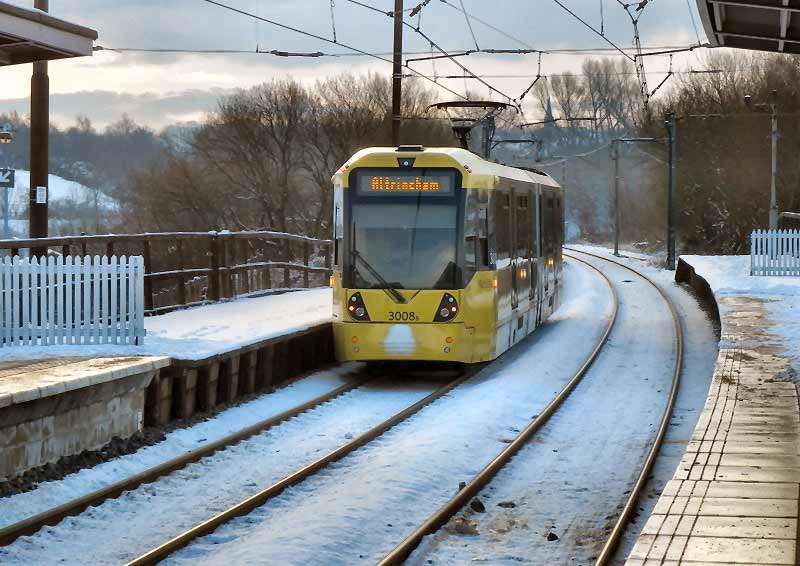Integrated transport system
Contents |
[edit] Introduction
Integrated transport involves the combining of different modes of transport to maximise ease and efficiency for the user in terms of time, cost, comfort, safety, accessibility and convenience.
Different modes of transport have differing technical and operational capabilities. Each mode of transport in the system has to develop its capacity to meet specific demand viewed within the total demand for all modes of transport in the system. In this way, as well as competing with each other, they also supplement each other.
A successful integrated transport system should result in higher demand for public transport, with a knock-on reduction in congestion and pollution.
Some examples of integration between transport modes, which make up part of the overall system, include:
- Street trams located in large pedestrian zones outside railway station entrances for ease of interchange.
- Stations that combine bus, train, subway/tube services.
- Circulation systems – escalators, lifts, and so on – that provide easy access to different forms of transport.
- Same-level interchange between different systems.
- Bicycle storage capacity on buses/trains.
- Park and ride facilities.
- Route planners that include different modes of transport.
- Maps within different modes of transport showing interchanges with other systems.
- Timetables that optimise transfers between systems.
- Ticketing that allows transfers between systems.
[edit] Planning techniques
A successfully integrated transport system involves the coordination and optimisation of timetables, to ensure that users do not have undue waiting times between different modes. The central aim should always be the decrease in time of the user’s journey from the origin to destination.
[edit] Integrated planning
One of the primary challenges in integrating systems is the coordination of the different agencies responsible for different transport modes, some of which will be privately-operated. Coordinated planning ensures easy interchange, in terms of both proximity and time, resulting in trips with minimum disruption.
This is also important in terms of providing real-time service information, allowing users to make informed decisions in response to changing infrastructure situations, such as train delays or flight cancellations.
[edit] Integrated infrastructure
This involves the seamless connection of various transport modes. For example, the connection of park-and-ride facilities and stations; connections between cycleways and public transport; connections between public transport and retail/commercial centres that are popular destinations.
[edit] Integrated operations
This involves the coordination of infrastructure and planning, to ensure seamless connections between, for example, bus-to-bus, bus-to-train, bus-to-ferry, and so on. Rather than acting purely in competition with each other, the modes need to complement each other. Operationally, this can include integrated ticketing and fares to enable user transfer without financial penalty.
[edit] Related articles on Designing Buildings
- Boosting electric vehicle use.
- Collaboration needed to deliver national and regional transport strategies.
- Compliant public transport node.
- Connecting England's Economic Heartland.
- Car park.
- Cycling and walking plan.
- Designing smart cities.
- Highway authority.
- Hyperloop
- Infrastructure.
- Integrated systems.
- Intermodal transport.
- Kiss and ride.
- Movement network.
- Multi-storey car park.
- Road traffic management.
- Safe pedestrian route.
- Smart village trials autonomous shuttle and private mobile network.
- Sustainable transport.
- The case for a new road-user charging scheme in London
- The future of transport in the UK.
- Traffic and transport.
- Transport assessment.
- Transport design and health.
- Travel plan.
- Underground car park.
- Union Connectivity Review calls for UK-wide strategic transport network.
- Walking distance.
- Williams-Shapps Plan for Rail.
Featured articles and news
A change to adoptive architecture
Effects of global weather warming on architectural detailing, material choice and human interaction.
How big is the problem and what can we do to mitigate the effects?
Overheating guidance and tools for building designers
A number of cool guides to help with the heat.
The UK's Modern Industrial Strategy: A 10 year plan
Previous consultation criticism, current key elements and general support with some persisting reservations.
Building Safety Regulator reforms
New roles, new staff and a new fast track service pave the way for a single construction regulator.
Architectural Technologist CPDs and Communications
CIAT CPD… and how you can do it!
Cooling centres and cool spaces
Managing extreme heat in cities by directing the public to places for heat stress relief and water sources.
Winter gardens: A brief history and warm variations
Extending the season with glass in different forms and terms.
Restoring Great Yarmouth's Winter Gardens
Transforming one of the least sustainable constructions imaginable.
Construction Skills Mission Board launch sector drive
Newly formed government and industry collaboration set strategy for recruiting an additional 100,000 construction workers a year.
New Architects Code comes into effect in September 2025
ARB Architects Code of Conduct and Practice available with ongoing consultation regarding guidance.
Welsh Skills Body (Medr) launches ambitious plan
The new skills body brings together funding and regulation of tertiary education and research for the devolved nation.
Paul Gandy FCIOB announced as next CIOB President
Former Tilbury Douglas CEO takes helm.
UK Infrastructure: A 10 Year Strategy. In brief with reactions
With the National Infrastructure and Service Transformation Authority (NISTA).
Ebenezer Howard: inventor of the garden city. Book review.
Airtightness Topic Guide BSRIA TG 27/2025
Explaining the basics of airtightness, what it is, why it's important, when it's required and how it's carried out.






















